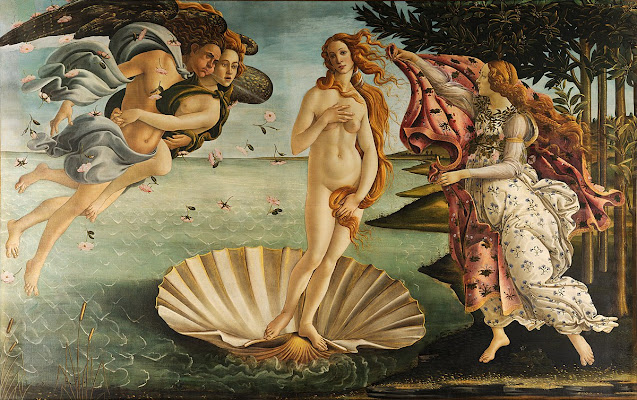 |
| The Birth of Venus -Sandro Botticelli |
Chapel for Pope Sixtus IV. Other mythological works include Pallas and Centaur (c.1482, Uffizi Museum, Florence), Venus and Mars (1483, National Gallery, London) and La Primavera (1484-6, Uffizi). Including these works, The Birth of Venus (1484-86) remains one of the hidden gems of the Florentine Renaissance.
The painting, drawn with tempera on canvas, shows the female nude figure of the goddess Venus standing on the dry land that had arisen from the sea. It was commissioned by Lorenzo the Magnificent (1449-92) of the Medici family, whose quattrocento humanist circle was especially interested in classical mythology, and marks the culmination of the resurrection of ancient myths in the context of humanistic Renaissance architecture.
A prime example of the sort of image attacked by the Dominican monk Savonarola, in his virulent four-year crusade against profanity and frivolity (1494-8), the painting miraculously survived the monk's "bonfire of vanities" in 1497. That, given its seemingly pagan background and the fact that it featured one of the first full-length female nudes since the classical period. This fortunate fortune allows us to appreciate one of the best Renaissance works by one of the most fashionable early Renaissance artists.
